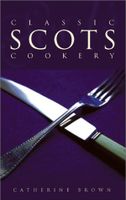Advertisement
Aberdeen Angus; Beef Shorthorn; Galloway: Highland Beef breeds
Appears in
Published 2003
The oldest native breeds are the Galloway and Highland. With their thick coats and sturdy feet, they can be kept on exposed hill and marginal land, which Scotland has in abundance. It’s their natural habitat, where they eat a natural diet, thriving on low-cost winter and summer rations, that they convert into high-quality beef with marbled fat. It makes environmental and agricultural sense to breed beef in Scotland. The other native breeds – Aberdeen Angus and Beef Shorthorn – are less hardy and are wintered inside but are still fed a high-quality natural diet based on silage (preserved grass), converting this into early-maturing, high-quality beef with marbled fat. Around three-quarters of the beef produced in Scotland comes from beef-suckler herds where the calves are allowed to feed from their mothers until they can feed for themselves. Cattle from these beef-breeding herds command the highest prices for the prime quality. Cheaper beef comes from dairy cattle, past their age of useful milk production or from herds, known as ‘bull beef’, which have been intensively reared indoors and fed on a less natural diet.


